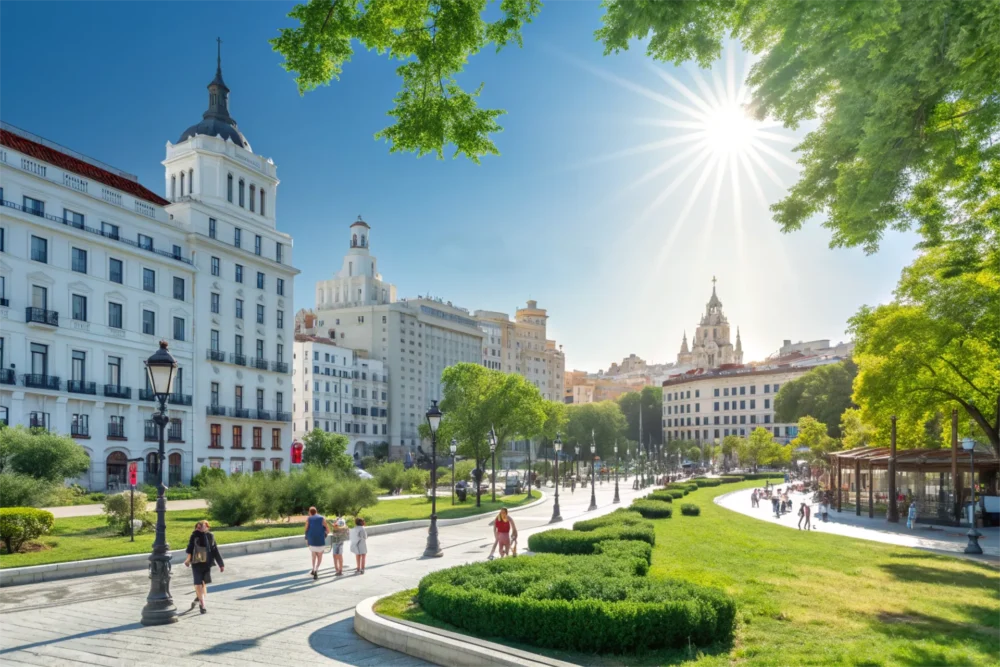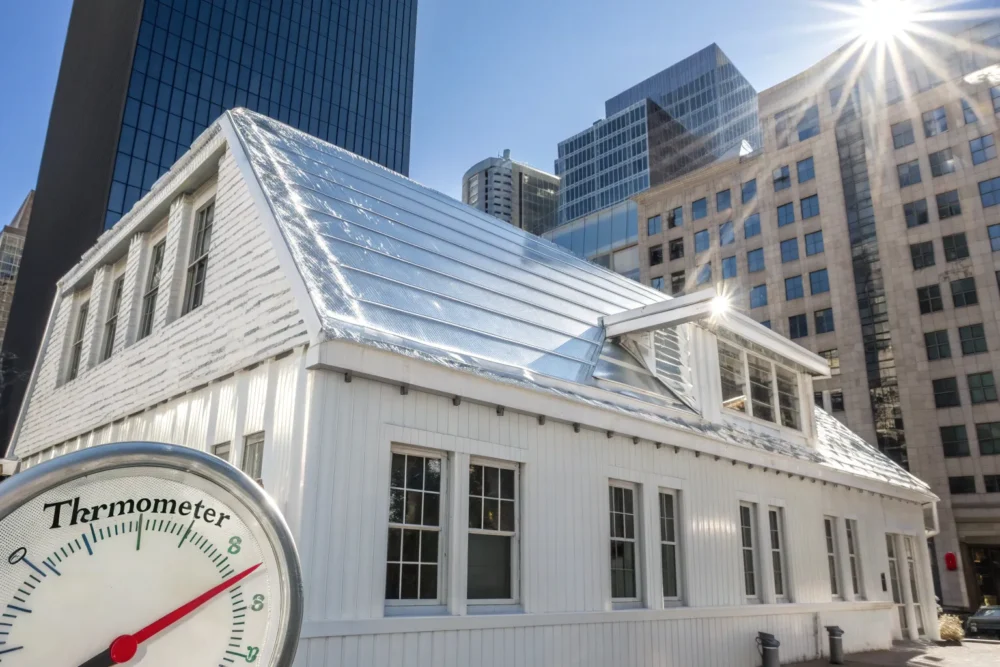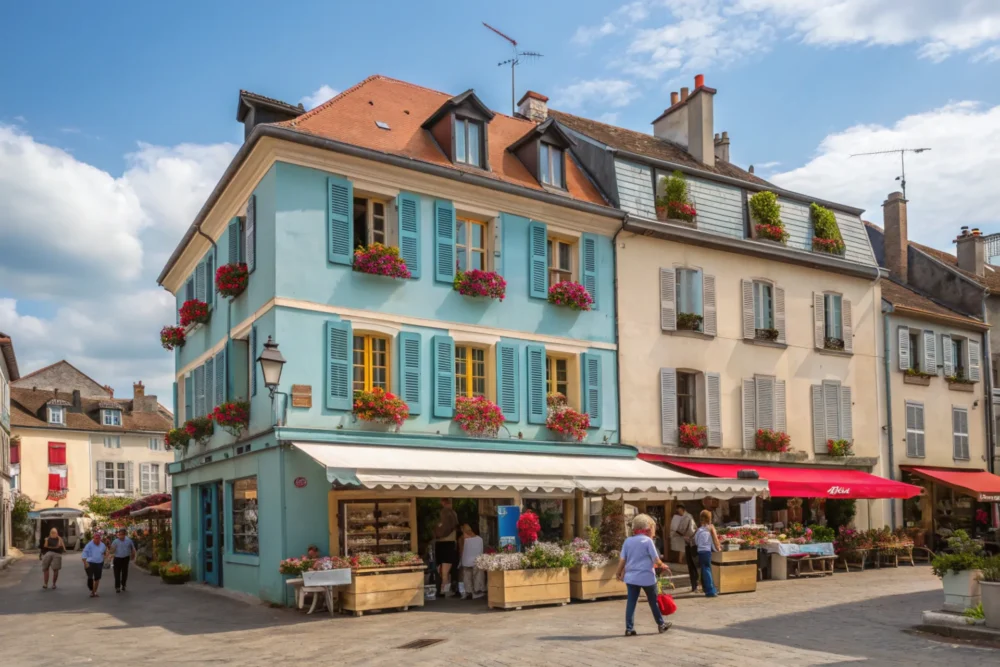I’m sweating just thinking about Europe’s latest heatwave. France is baking, the Arctic Circle hit 30°C for 13 days, hospitals are overflowing, and reindeer are dying. Can cool paint coatings help?
Cool paint coatings reflect sunlight, cooling cities by up to 2°C. They’re a cheap, quick fix for Europe’s heatwaves, making streets and homes more comfortable.
I’ve felt the heat walking through cities, desperate for shade. Cool paint coatings could be a game-changer for Europe. Let’s explore how they work and why they matter.
How Do Cool Paint Coatings Fight Urban Heat?
I walk through France’s scorching streets, feeling like I’m in an oven. Can cool paint coatings make cities like Paris cooler and more livable?
Cool paint coatings reflect sunlight, cutting surface heat by 40%. They lower city temperatures by 2°C, easing urban heat and boosting comfort.
What Makes Cool Paint Work?
I learned about cool paint coatings from a study by Singapore’s NTU. These paints have additives that bounce sunlight back, stopping buildings and roads from soaking up heat. A roof with cool paint can reflect 50% more sunlight than regular paint. This keeps surfaces cooler and lowers nearby air temperatures. I’ve seen how hot asphalt burns my feet in summer, so this idea excites me.
Why Urban Heat Is a Problem
Cities trap heat because of concrete and asphalt. In France, July 2025 saw temperatures hit 41°C in apartments, forcing 1,900 schools to close. I remember visiting a friend in Lyon, where we couldn’t sleep without fans. Urban heat islands make cities 10-15°C hotter than rural areas. Cool paint coatings, like those at GD3U, could change that.
Real-World Results
In Singapore, NTU coated an industrial area with cool paint. The result? Afternoon temperatures dropped 2°C, and people felt 1.5°C cooler. I imagine France using this on old buildings to make summers bearable. Tests in Lyon with low-energy fans show cities are eager for solutions like this.
Pros and Cons
Here’s a quick look at cool paint coatings:
| Aspect | Pros | Cons |
|---|---|---|
| Effectiveness | Cuts surface heat by 8-19°F | Colored paints less effective |
| Cost | Cheap and easy to apply | Needs re-coating every few years |
| Environment | Saves energy, eco-friendly | Paint production may create waste |
My Take
Cool paint is promising, but it’s not perfect. I worry about old European cities like Paris, where historic buildings might not allow coatings. Still, combining paints with green spaces could make a big difference. We need practical fixes now.
Why Is the Arctic Circle Heatwave So Deadly?
I read about the Arctic Circle’s 13-day 30°C heatwave. Hospitals are full, ice rinks are now cooling centers, and reindeer are dying. What’s making this so dangerous?
The Arctic’s heatwave comes from melting ice, which absorbs more heat. This threatens reindeer and people’s health, overwhelming hospitals and ecosystems.
What’s Heating the Arctic?
I was shocked to learn about the “Arctic amplification effect.” Melting ice means darker oceans absorb more heat, warming the region twice as fast as the globe. In July 2025, Norway and Finland hit record-breaking 30°C for 13 days. I’ve never been to the Arctic, but I can’t imagine it without snow.
Impact on People and Wildlife
The heatwave is brutal. Reindeer are dying from lack of shade and water, hurting local communities who depend on them. In Finland, hospitals are packed with heatstroke cases. I read about ice rinks turned into cooling centers, which shows how desperate things are.
Could Cool Paint Help?
Cool paint coatings might work on temporary Arctic buildings, reflecting heat to cool local areas. But the Arctic’s delicate ecosystem makes me cautious. Large-scale use could harm wildlife, so we need careful testing.
Comparing Solutions
Here’s how cool paint stacks up against other Arctic fixes:
| Solution | Pros | Cons |
|---|---|---|
| Cool Paint | Quick cooling for buildings | May harm fragile ecosystems |
| Green Spaces | Long-term cooling, eco-friendly | Hard to grow in Arctic soil |
| Shade Structures | Instant relief for animals | Doesn’t fix regional warming |
My Thoughts
Cool paint could help in small ways, but it’s not enough. The Arctic’s heatwave shows climate change is out of control. I feel we need global action, not just local fixes, to save places like this.
How Does France’s Heatwave Hit Everyday Life?
I heard France closed 1,900 schools in July 2025 due to heat. My friends there say apartments feel like saunas. Can cool paint coatings help families?
Cool paint coatings lower indoor temperatures by reflecting heat. They cut air conditioning use, saving money and making French homes more livable.
How Heatwaves Hurt Families
France’s 2025 heatwave was rough. Temperatures hit 41°C in homes, making sleep impossible. Kids and the elderly faced heatstroke risks. I remember a summer visit to Paris, where I felt trapped indoors without relief. Schools shutting down left parents scrambling.
Cool Paint for Homes
Cool paint on roofs and walls could be a lifesaver. NTU’s study showed a 40% drop in heat absorption, keeping homes cooler. I’d love to see this on my friend’s old apartment building in Lyon, where AC isn’t common. Check out GD3U for more on this tech.
Practicality and Challenges
Here’s a breakdown of using cool paint in France:
| Aspect | Pros | Cons |
|---|---|---|
| Fit for Homes | Works on old buildings | Historic sites may block use |
| Cost Savings | Cuts AC bills | Maintenance adds long-term costs |
| Acceptance | Eco-friendly, easy to like | Needs government push to spread |
My Perspective
Cool paint could make French summers bearable, especially for families without AC. But I think cities need incentives, like subsidies, to get people on board. Pairing this with better insulation could transform homes.
Conclusion
Cool paint coatings offer a cheap, green way to cool Europe’s cities, protect Arctic wildlife, and ease French families’ struggles. Global climate action is still key.




